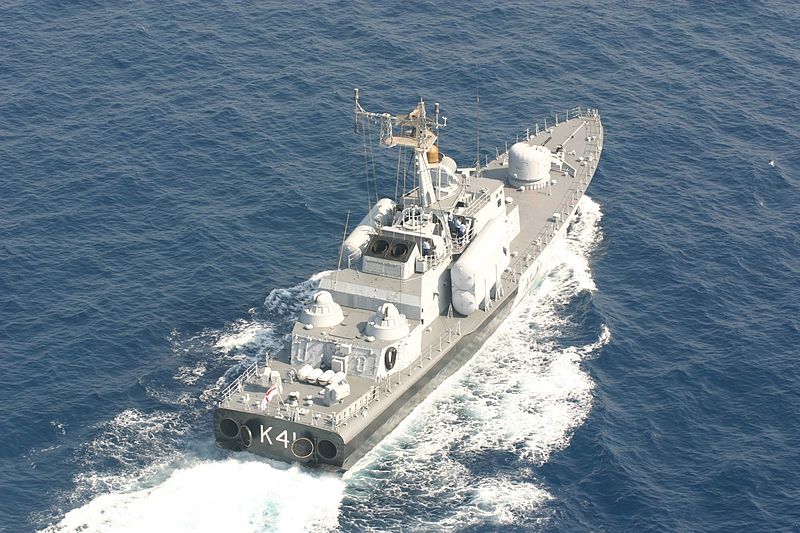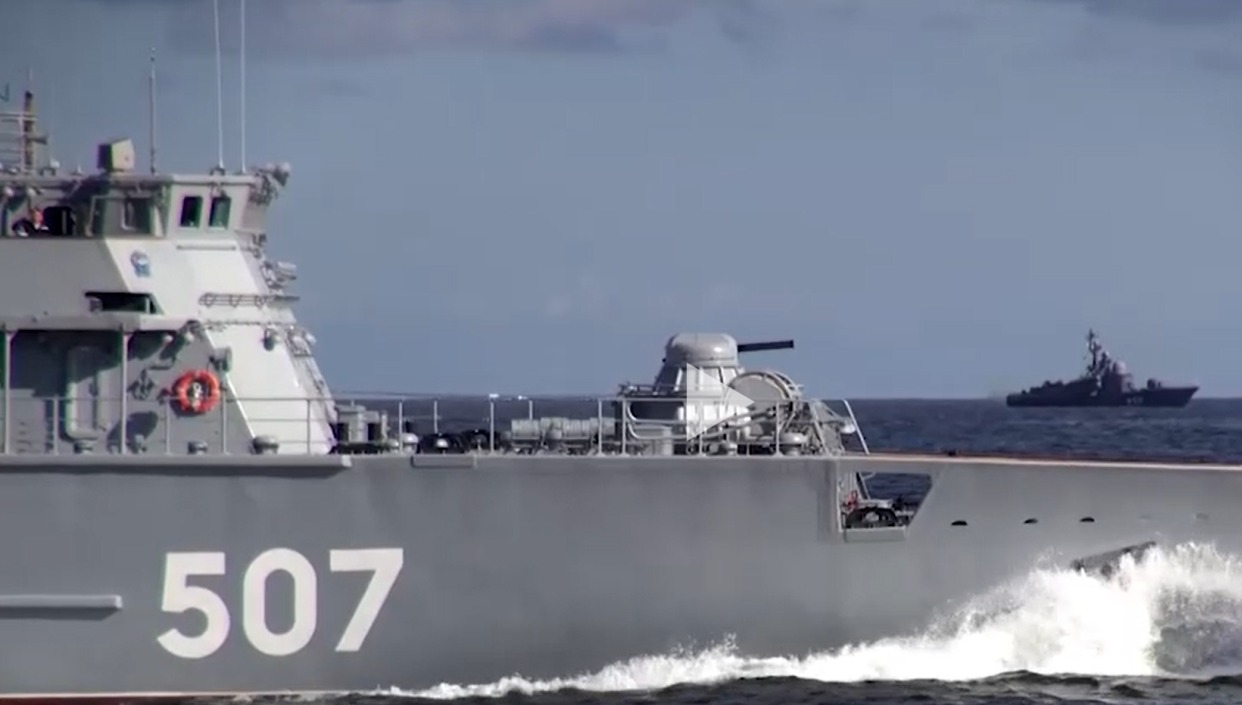Missile boats of the Russian Navy’s Pacific Fleet undertook live missile firing in the Sea of Japan on April 26, releasing Moskit cruise missiles against a simulated target. This comes amid increased tensions even in the western Pacific between the US plus its allies Japan and South Korea and the Russia-North Korea-China camp.
Interestingly, the class and type of vessels that fired the missiles share a connection with the Indian Navy. One, the Tarantul-class missile boats of the Pacific Fleet that participated in the exercise are also used by the Indian Navy, rechristened as the Veer-class.
Secondly, the Indian Navy’s missile boats were also responsible for its most successful action during the 1971 Indo-Pakistan War.
The Soviet-made Osa-class missile boats attacked and sank two destroyers, a minesweeper, and other support vessels of the Pakistan Navy at Karachi harbor on December 4-5 in the legendary Operation Trident. India celebrates its Navy Day annually on December 4 to mark the triumph.
While the Soviet-made Osa-class boats have long retired, eight current Veer (Tarantul)-class missile boats derive their names from the 25th Missile Boat Squadron that participated in Op Trident. On 28 April 2016, INS Veer and INS Nipat were the first Veer-class corvettes to be decommissioned.
Moskit Missiles Fired in the Sea Japan
According to a statement by the Russian Ministry of Defense (RuMoD), Tarantul-class “missile ships,” numbers R-261 and R-298 from the “Pacific Fleet missile ships” fired the P-270 Moskit-M cruise missiles in the Sea of Japan.
This was part of the “winter training period inspection,” when the Moskit missiles were “live-fired” at a sea target in Peter the Great Bay.
A “surface action group” made up of the two boats “conducted” the “joint missile strike” against the “mock enemy warship” target more than 90 km away. The two Moskit missiles (one each from each of the two boats) “successfully” struck the target “in a direct hit.” “Naval aircraft confirmed the target engagement.”
More than 20 surface ships and support vessels of the Pacific Fleet were engaged in closing the area of the live firing. A video released by the RuMoD showed various angles from onboard the vessels and from a distance when the two boats fired their missiles.
Indian Navy’s Operation Trident
The Indian Navy conducted Operation Trident on December 4, 1971, immediately a day after the war erupted on the western front following the Pakistan Air Force’s (PAF) preemptive attack on eleven different airfields. Four days later, Operation Python followed, in which the IN targeted the oil and fuel storage facilities around Karachi port.

In the summer of 1971, the Indian Navy saw the top secret formation of the 25th Missile Squadron led by Commander Babru Yadav after he returned from a year of training in Vladivostok, Russia. India had acquired eight Osa-class missile boats—rechristened Nashak, Nipat, Nirghat, Nirbhik, Vinash, Veer, Vijeta, and Vidyut—along with the Styx anti-ship missile.
The missile boats sailed within 70 nautical miles (130 km) off Karachi, where the Styx was fired on sea—and land-based targets. Since the Osa boats lacked the range for such a journey, The IN towed the three boats to the rendezvous behind Petya-class corvettes INS Kiltan and INS Katchall. A fleet replenishment tanker refueled the boats on their way back, accompanied by two anti-submarine warfare (ASW) vessels.
#NavalNews
Russian Navy Pacific Fleet's Project 12411MR/Tarantul III Mod-class corvettes R-261 & R-298 carried out a joint launch of P-270 Moskit-M anti-ship cruise missiles during an exercise in the Peter the Great Gulf, Sea of Japan, against a surface target located at a… pic.twitter.com/XoCAMJneFo— Saturnax 🇸🇰🇪🇺🇺🇦 (@Saturnax1) April 27, 2024
The strike force stayed at a distance during the day and out of the range of Pakistani Air Force (PAF) aircraft since they also lacked night fighting capabilities. The Petyas were intended to provide communication and guidance on potential targets using their advanced radar, while the fast-moving Osa boats made small, agile targets.
The operation began around 9:30 pm when the three missile boats inched 130 km off Karachi but were detected by an advanced US-made radar. Finding unidentified bogeys on a northern course towards Karachi, Pakistani ships began their search.
Nirghat fired the first Styx at the Pakistani destroyer PNS Khaibar when its commanding officer mistook the incoming missile as an aircraft due to the illusion created by the bright white exhaust against the night sky. The misunderstanding found its way into the radio transmission to the PNHQ after the Styx hit the Khaibar on the starboard side: “Enemy aircraft attacked. No. 1 boiler hit. Ship stopped.”
Nirghat fired a second missile that hit the No. 2 boiler room. On both occasions, the Khaibar engaged the screaming missiles with its onboard Bofors anti-aircraft guns but eventually sank. The Nipat then fired one Styx each at two northeasterly targets: the MV Venus Challenger and her escort, the PNS Shah Jahan. The Challenger was apparently carrying American ammunition for Pakistan from the US military base at Saigon in Vietnam.
While the Challenger instantly sank, the Shah Jahan was badly hit. The minesweeper PNS Muhafiz, too, was hit by a Styx fired from the Veer on the port side near the bridge, splitting it into two.
The Indian Navy soon followed it up with Operation Python around December 8, 1971, where missile boat INS Vinash, accompanied by frigates Trishul and Talwar, hit the oil fields around Karachi.
Missile Boats Are Still Potent Weapons
Russian Navy’s live-missile firing in the western Pacific, the war in the Black Sea, and the Iranian Navy’s employment of small, fast-moving anti-ship missile-armed attack crafts and patrol boats demonstrate the relevance of even relatively smaller and simpler platforms.

Missile boats and corvettes can help distribute weapons engagement roles and free larger capital ships like destroyers of many routine combat functions.
Iran uses boat swarms as a necessity owing to the absence of a large navy with bigger, sophisticated destroyers and guided missile frigates. However, even the US is pursuing the concept through its Distributed Maritime Operations (DMO).
US Media Acknowledges S-400’s Might! Says Russian AD System Can Track Stealth Fighters Like F-35
Combined with its plans to have a 500-ship fleet with many unmanned vessels, the US Navy (USN) hopes to be able to spread out, get close, and fight inside China’s anti-access/area-denial (A2/AD) bubble.
Moreover, smaller missile boats also allow bigger conventional powers to match the asymmetry posed by non-state actors like the Houthis. The Yemeni group’s cheap drones and missiles, costing as low as $2,000, have not hit a single coalition vessel but have been shot down by costly air defense missiles worth at least $2 million.
Missile boats can undertake many of such smaller anti-air and anti-surface roles, freeing up gunnery and watch crews on destroyers and frigates to track larger enemy ships, engage ballistic missiles, or hunt for submarines.
- The author can be reached at satamp@gmail.com
- Follow EurAsian Times on Google News




